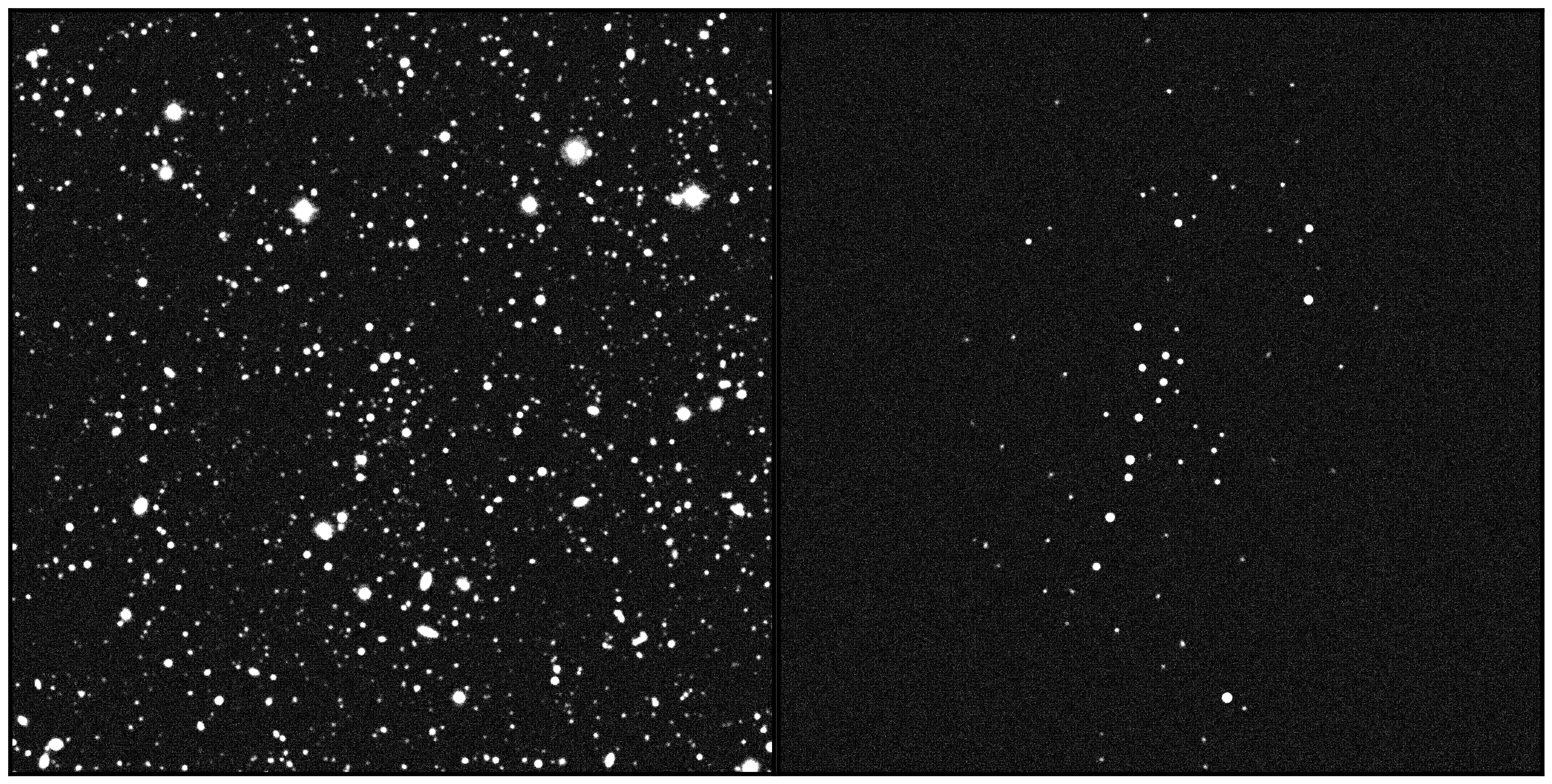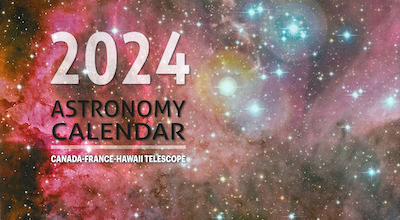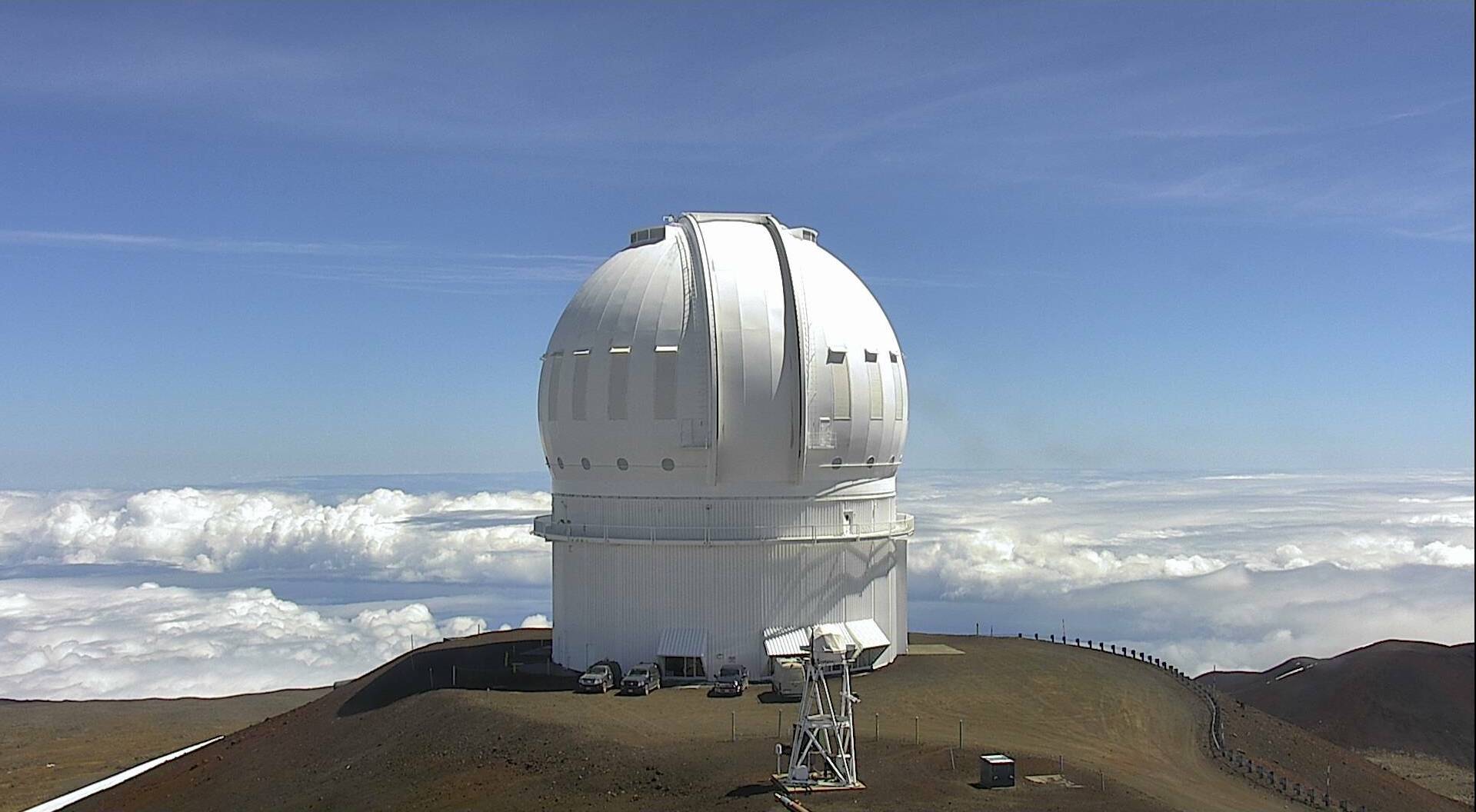Haleakala and Maunakea Observatories team up to observe a visitor from outside the Solar System.
November 20th 2017,
Artist’s interpretation of ‘Oumuamua as it approaches our Solar System. Exact shape and surface features are extrapolations from research and based on bodies in our Solar System, except the extreme elongated shape is unique to this object. Credit: Gemini Observatory/AURA/NSF video by Joy Pollard. Full resolution MP4
|
Artist’s interpretation of ‘Oumuamua as it approaches our Solar System. Exact shape and surface features are extrapolations from research and based on bodies in our Solar System, except the extreme elongated shape is unique to this object. Credit: Gemini Observatory/AURA/NSF video by Joy Pollard. Full resolution MP4 |
A team lead by Karen Meech from the University of Hawaii used CFHT, UKIRT and the W.M. Keck Observatory along with Gemini South and ESO’s Very Large Telescope in Chile to observe a unique object discovered by Pan-STARRS1 on Haleakala. The discovery and observations are published on today’s edition of the journal Nature.
On October 19 2017, Pan-STARRS1 discovered an unusual object moving fast toward the west. Pan-STARRS1 is a 1.8 meter telescope located at the summit of Haleakala on the island of Maui. It is a dedicated telescope with one instrument, the world’s largest digital camera with 1.4 Giga pixels. The telescope is an early warning system designed and operated to observe Near Earth Object (NEO) candidates to determine their orbits, sizes and whether any of them pose a threat to Earth. NEOs discovered by Pan-STARRS1 are often followed up at CFHT to establish a more accurate orbit and the nature of the newly discovered object.
Follow-up observations using CFHT on October 22nd allowed the first calculation of the eccentricity or elongation of the orbit of the object. Based on the Pan-STARRS1 data, the team had an idea that the object was highly unusual. Rapid follow up observations were essential because the object had already passed its closest point to the sun and was moving back into space
"Observing ‘Oumuamua was demanding and exciting" said the UH resident astronomer at CFHT, Dr. Andreea Petric who was responsible for the observations that night. Special modifications were required to the standard CFHT operations as was constant monitoring by members of the CFHT software group. The team took 60 images, adjusting several parameters of observing before the object was found. When observing fast moving objects like 'Oumuamua, the stars do not move at the same rate as the target and appear as trails in the image. "When we were about to give up, we saw it: a dot among the trails of stars. We were thrilled" says Petric.
The elongation measurement was crucial. If the object has an eccentricity greater than 1.0, the object is not bound to the Sun, i.e. not part of our solar system. The team calculated a value of 1.188, highly eccentric, which confirmed the unusual nature of this object. This measurement established that the object is the very first one observed that originates from outside the Solar System. Since then, the object has been observed by several observatories, refining the measurement of the eccentricity of the orbit to 1.1956. The team measured the light curve of the object and determined it was dimensionally very oblong, with a ratio of 10:1 and a mean radius of 102 meters, the size of a football field. It spins very fast with a rotation period measured at 7.34 hours. The rocky object has characteristics similar to Kuiper Belt objects, organic-rich comets and trojan asteroids. "This thing is very strange," said Karen Meech, University of Hawaii astronomer and lead author on the paper.
"The CFHT data was absolutely critical for understanding the light curve, for our initial understanding of the orbit, and determining that this object was more like an asteroid and not a comet," noted UH astronomer Richard Wainscoat, an author on the paper.
The team decided to name the object ‘Oumuamua in reference to the Hawaiian word describing a scout or messenger sent from the distant past to reach out to us ('ou means "reach out for", and mua with the second mua placing emphasis, means "first, in advance of"). The object's official name is 1l/2017 U1 ('Oumuamua). Originally denoted A/2017 U1 (with the A for asteroid), the body is now the first to receive an I (for interstellar) designation from the International Astronomical Union, which created the new category after the discovery.
The discovery of ‘Oumuamua tells us that relics of the formation of other stellar systems do reach the Solar System and can be detected. This will enable direct measurement of elemental abundances in other stellar systems and testing of theories of planet formation.
Although the probability of an interstellar object hitting the Earth is fairly small, objects like 'Oumuamua would produce a larger impact since they move at a higher speed than their Solar System counterparts with the same mass. Observations to locate and characterize these objects will continue and telescopes in Hawaii will continue to play a crucial role in this effort to protect the Earth from potential destructive impact by various space objects.





